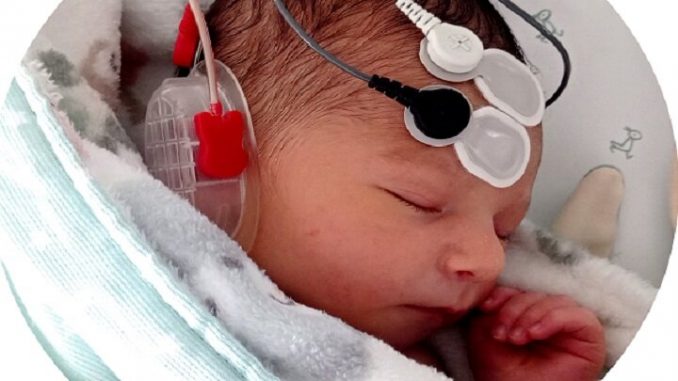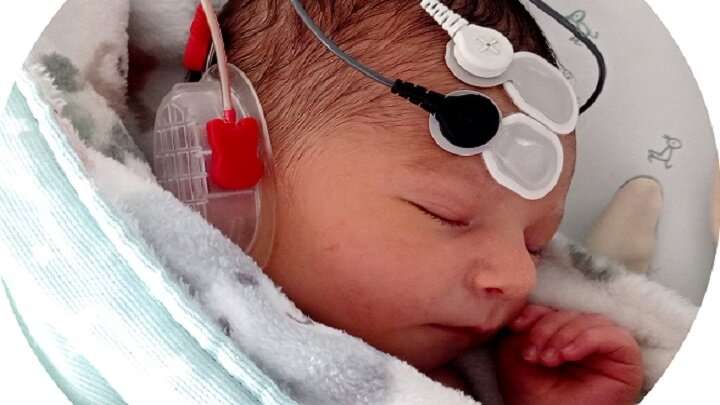

When pregnant women sing to their babies or listen to music on loudspeakers during their pregnancy, babies are born with a better ability for neuronal encoding of speech sounds. This is one of the main conclusions of a study led by Professor Carles Escera, head of Brainlab—Research Group on Cognitive Science at the Faculty of Psychology of the University of Barcelona, the Institute of Neurosciences of the UB (UBNeuro) and the Sant Joan de Déu Research Institute (IRSJD).
The results of this paper, published in the journal Developmental Science, provide new perspectives on the effects of prenatal musical exposure about language stimuli using a specific brain response: the frequency-following response (FFR), a neurophonic auditory evoked potential that informs about the appropriate neural coding of speech sounds.
According to the conclusions, daily musical exposure during the last weeks of the pregnancy is associated with an improved encoding of low-frequency sound compounds, which could improve the newborn’s perception of the tone.
The study was carried out in collaboration with the expert Maria Dolores Gómez-Roig, head of Obstetrics and Gynecology at Sant Joan de Déu Hospital and researcher at the Sant Joan de Déu Research Institute (IRSJD). The study includes the participation of researcher Teresa Ribas-Prats (UB-UBNeuro-IRSJD), who had already worked with this technique in a previous exploratory study in 2019.
FFR records and speech stimuli
The frequency-following response (FFR) is conditioned by a variety of speech and language impairments, and has shown to be affected by the fetal environment and the prenatal acoustic environment. Therefore, the researchers of the study propose that this measure could be used as a biomarker to detect the risk of language impairment and to establish preventive measures early in life.
The study is based on the comparison of FFR recordings in 60 healthy newborns (aged between 12 and 72 hours), including 29 who were exposed daily to music during the prenatal period and 31 who were not exposed to music. Specifically, the encephalogram recordings of the babies were analyzed for two different speech stimuli: the /da/ stimulus—the most commonly used in FFR and newborn research—and /oa/, which allows analysis of the frequency coding to which the newborn was exposed in the womb.
Neural plasticity and hearing in babies
The study reveals that daily exposure to music during the last trimester of pregnancy is associated with more robust coding of speech stimuli.
Prenatal exposure to music is associated with fine-tuned coding of the fundamental frequency of human speech, which may facilitate processing and early language acquisition. “The musical stimulus reaches the auditory system with low-frequency rhythmic components that train it to organize neural plasticity,” says the doctoral student Sonia Arenillas-Alcón, first author of the article and member of the Brainlab—Cognitive Neuroscience Research Group.
The researchers also found that exposure to music during pregnancy has no effect on the speed of neural transmission, in contrast to the faster processing speed of auditory and speech stimuli identified in musically trained adults, which is the result of the myelination of the underlying neural structures.
“This is only the first step towards a specific clinical application after the necessary follow-up studies,” says Professor Carles Escera. “Therefore, children with an attenuated brain response, for example, underweight born babies, could benefit from a musical intervention program.
More information:
Sonia Arenillas‐Alcón et al, Prenatal daily musical exposure is associated with enhanced neural representation of speech fundamental frequency: Evidence from neonatal frequency‐following responses, Developmental Science (2022). DOI: 10.1111/desc.13362
Journal information:
Developmental Science
Source: Read Full Article